What Type Of Pain Is A Crick In The Neck
A crick in the neck is loosely defined term. When searching, you will find it used for just about any type of neck pain.
- In a 2011 study in the Spine Journal, the authors defined crick in the neck as “unilateral cervical pain and limited motion”, which means one sided neck pain that causes restricted motion. The authors of this study investigated the presence of periarticular tissue inflammation and zygapophysial joint synovitis in the cervical region using magnetic resonance imaging (MRI). Basically, they were looking for inflammation around the small joints of the neck.

The plane of active motion most commonly limited by was rotation (turning head) to the painful side of the neck, followed by side bending to the painful side and extension (bending head back).
The authors concluded no evidence of neck joint inflammation was detected, and termed the patients as having acute benign neck pain. “Recruitment of subjects with acute “crick in the neck” pain (less than 48 hours duration) is difficult but feasible over a long data collection period.”
Evidently, they were looking for joint problems, like a facet joint syndrome and found no evidence of joint inflammation.
Usually, it is the inflammation that will cause pain. So, this study indicated that, most likely, it is not due to joint inflammation. However, it is possible that their methods were not sophisticated enough to detect inflammation of the joints, so it can not be ruled out completely.
From my experience, what people call a crick in neck is usually neck spasms or a problem with a particular neck muscle which usually follows typical patterns of pain and dysfunction as seen in a neck strain. You can view this and see which muscles can be involved with specific recommendations on how to treat that muscle.
I have also seen a patient describe a crick in neck which turned out to be a small locking of the joint. Sometimes, after an injury like whiplash, especially one treated in the past or not treated at all, the joint can form scar tissue from improper injury healing in what is called adhesions because they stick to the joint. In this case, a simple analysis of which joint is locked to locate the offending joint and a specific adjustment to release it usually did the job and, although sometimes a little painful at first, it usually cleared up quickly and fixed the problem.
For a muscle strain, massage and heat can help, but it is good to find the cause, which is sometimes as simple as having the patient not sleep directly under a ceiling fan which can chill the neck muscles.
Other times, a patient will wake up after sleeping in an awkward position and say they have a crick in neck. Again, treatment of the offending muscle can help along with use of good cervical pillows to keep the head and neck in a better aligned position, which takes pressure off of muscles and allowing them to relax as much as possible in a normal, healthy position.
This condition is, as the scientific article described it as “benign”, meaning that it is self limiting and should clear up in a short period of time even if you do nothing. You should seek professional help to get it looked into further if it lasts more than a week, gets progressively worse, or you start experiencing other symptoms such as radiating pain or numbness into the arm or hand, if you have a high fever or you feel you need neck pain medications other than over the counter.
What can I do for a crick in the neck?
You can use heat from a hot towel, a hot shower, hot pack, a neck wrap or moist heating pad – it is preferable to use moist heat for about 15 to 20 minutes up to once per hour. After the heat, you can slowly use some neck stretching by moving your head away from the pain. You can take some medication like Ibuprofen, Motrin or Tylenol. Another method I like is, when you just have to be on the go, is to use some medicated topical form of treatment, massage in some herbal liniment or one of my favorite is the topical roll on applications which can ease the pain and work towards healing.
So, don’t let some people scare you by using the term crick in the neck as an all inclusive neck pain term or to get you to buy something. I have seen it in searches and have been amazed at what I have seen, using it for everything from meningitis to a herniated disc. There is some good basic advice, but if you think it is that serious or you have an injury and it is that painful – please see a doctor!

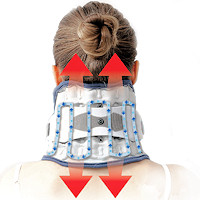 Neck Traction Devices
Neck Traction Devices Cervical Pillows
Cervical Pillows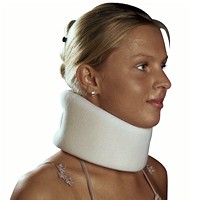 Neck Support Collars
Neck Support Collars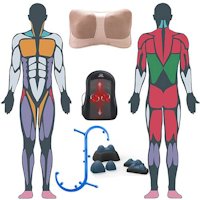 Muscle Therapy Tools
Muscle Therapy Tools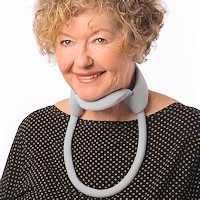 Head Supports
Head Supports Topical Pain Relievers
Topical Pain Relievers Special Pillows
Special Pillows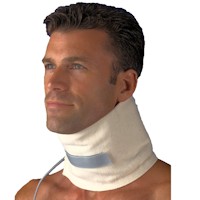 Heat Therapy
Heat Therapy Cold Therapy
Cold Therapy